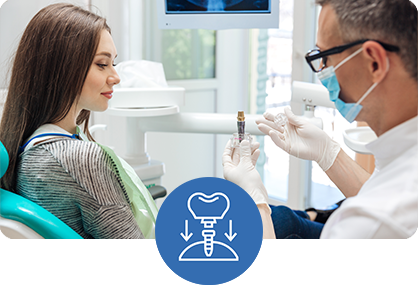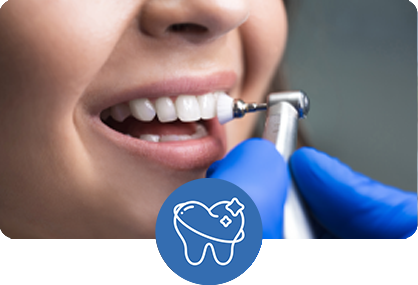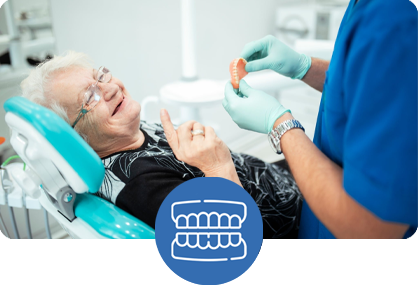Are you expAll-on-4 dental implant technology may provide an optimal solution. This innovative technique utilizes just four strategically placed implants to support an entire arch of prosthetic teeth, aimed at restoring both function and aesthetics, with treatment timelines varying based on individual clinical factors. The following information explores the clinical advantages of All-on-4 implant systems and what patients can expect throughout the treatment process.
Clinical Advantages of All-on-4 Dental Implants
- Strategic placement of only four implants per arch
- Same-day restoration capabilities (“Immediate Loading Protocol”) depending on individual case factors
- Definitive solution for advanced edentulism
- Enhanced masticatory function and phonetics
- Preservation of alveolar bone integrity
- High success rates across diverse patient populations
- More cost-effective than traditional full-mouth rehabilitation
- Functional restoration soon after implant placement
- Excellent long-term clinical outcomes with proper maintenance and care
All-on-4 Dental Implant Technology: Clinical Overview
All-on-4 dental implant technology represents a significant advancement in implantology. Rather than utilizing individual implants for each tooth, this protocol employs four precisely positioned implants to support an entire prosthetic arch. Dental implants function as prosthetic tooth roots, providing stable anchorage for the fixed restoration. This methodology offers superior clinical outcomes for many patients, including those with moderate alveolar bone resorption who might otherwise be contraindicated for conventional implant therapy.
The All-on-4 protocol maximizes available bone volume through strategic implant positioning. This often eliminates the need for extensive bone augmentation procedures, significantly reducing treatment complexity and duration. The protocol typically involves placement of two axial implants anteriorly and two tilted implants posteriorly at up to 45-degree angles. This biomechanical configuration provides optimal support for the prosthesis. A principal advantage is the potential for immediate loading, which in suitable cases may allow patients to receive a provisional fixed prosthesis on the same day as implant placement.
Clinical Rationale for All-on-4 Dental Implants
All-on-4 implant systems offer numerous advantages over conventional removable prosthetics or traditional implant approaches. The following highlights key clinical benefits:
1. Superior Functional Outcomes
All-on-4 restorations significantly enhance masticatory efficiency and phonetic function. They offer excellent stability and comfort by minimizing movement and reducing pressure on the surrounding tissues.. Full mouth implant restoration using the All-on-4 protocol allows patients to regain near-natural functional capacity. Patients can confidently engage in normal masticatory, phonetic, and social activities without concerns about prosthetic instability.
2. Enhanced Aesthetic Results
The prosthetic restoration is customized to provide optimal aesthetics while maintaining facial support. The fixed nature of the prosthesis helps preserve facial architecture by preventing the progressive bone resorption commonly associated with edentulism and conventional denture wear. The prosthetic teeth are fabricated from high-quality materials such as zirconia that closely mimic natural dentition in appearance and light refraction properties.
3. Immediate Restoration Protocol
One notable advantage of the All-on-4 system is the potential for immediate loading. In many cases, patients may be candidates for receiving a provisional restoration on the same day as implant placement. This approach can help restore aesthetics and function early in the treatment process, supporting a quicker return to daily activities depending on individual clinical circumstances.
Clinical Protocol for All-on-4 Dental Implant Therapy
The All-on-4 treatment sequence involves several clinical phases:
1. Comprehensive Diagnostic Assessment
Initially, a thorough clinical examination and radiographic analysis are conducted. Three-dimensional CBCT imaging provides detailed assessment of available bone volume and anatomical structures. This comprehensive evaluation allows for precise treatment planning and prosthetic design. During this consultation, patient expectations are discussed, treatment options presented, and aesthetic outcomes visualized. Any preliminary procedures such as extractions or periodontal therapy are also identified at this stage.
2. Surgical Intervention
On the day of surgery, any remaining compromised dentition is extracted, and the four implants are strategically placed according to the predetermined surgical plan. The anterior implants are typically positioned axially, while the posterior implants are placed at an angle to maximize engagement with available bone and avoid vital anatomical structures. The patient receives appropriate anesthesia to ensure comfort throughout the procedure. The angulation of the posterior implants is a critical component of the All-on-4 protocol, allowing for increased anterior-posterior spread and improved biomechanical support even in cases of limited bone volume.
3. Immediate Provisional Restoration
Following implant placement, multi-unit abutments are connected and a provisional fixed prosthesis is delivered. This immediate restoration provides functional and aesthetic rehabilitation while protecting the implants during the osseointegration period. While these provisional restorations are designed for immediate function, patients are typically advised to follow a modified diet consisting of softer foods during the initial healing phase.
4. Osseointegration Period and Clinical Monitoring
During the subsequent months, osseointegration occurs as the implants become functionally integrated with the surrounding bone. Regular follow-up appointments are scheduled to monitor healing progress and ensure prosthetic integrity. Clinical monitoring typically includes assessment of implant stability, peri-implant soft tissue health, and prosthetic function. This osseointegration period generally spans 3-6 months. Throughout this phase, strict oral hygiene protocols must be maintained, and dietary modifications observed to optimize healing conditions.
5. Definitive Prosthetic Restoration
After complete osseointegration has been confirmed, the definitive prosthesis is fabricated and delivered. These permanent restorations are custom-designed to provide optimal aesthetics, phonetics, and masticatory function. Materials such as monolithic zirconia or high-density acrylic with titanium substructures are commonly utilized for their durability and biocompatibility. The prosthetic design incorporates precise occlusal relationships and gingival contours to ensure long-term functional success and patient satisfaction.
Patient Selection for All-on-4 Implant Therapy
All-on-4 dental implants are suitable for many patients with extensive edentulism. Ideal candidates typically:
- Present with good general health status
- Have sufficient bone volume for primary implant stability
- Seek a fixed, long-term solution for edentulism
- Desire an alternative to conventional removable prosthetics
- Demonstrate willingness to maintain appropriate oral hygiene
- Are free from uncontrolled systemic conditions that may impair healing
- Are non-smokers or willing to cease smoking during the treatment period
Notably, patients with moderate bone resorption who might have been considered unsuitable for conventional implant therapy may be candidates for the All-on-4 protocol, as this technique can often reduce or eliminate the need for bone augmentation procedures depending on individual assessments. Our dental specialists conduct thorough evaluations of each patient’s overall health status, oral condition, and available bone volume to determine candidacy and develop an individualized treatment plan.
Comparative Analysis: All-on-4 vs. Conventional Implant Protocols
Both All-on-4 and conventional implant therapies effectively restore dentition, but with notable differences in clinical approach:
All-on-4 vs. Conventional Implant Protocols
- Implant quantity: All-on-4 (4) | Conventional (6-8)
- Treatment duration: All-on-4 may allow for expedited restoration in select cases | Conventional typically requires multiple months
- Bone augmentation requirement: All-on-4 (Infrequent) | Conventional (Common)
- Functional loading: All-on-4 (often possible according to protocol) | Conventional (typically delayed)
- Relative cost: All-on-4 (generally moderate) | Conventional (can be higher)
- Suitability with moderate bone atrophy: All-on-4 (commonly considered) | Conventional (may require additional procedures)
- Full-arch rehabilitation approach: All-on-4 (single-phase protocol) | Conventional (usually multiple phases)
- Osseointegration period: All-on-4 (typically 3–6 months) | Conventional (commonly 6–12 months)
The clinical benefits of the All-on-4 protocol include treatment efficiency, potentially less invasive procedures, and earlier functional restoration in suitable cases. These aspects can contribute to a more streamlined treatment process and may reduce overall costs for full-arch rehabilitation. The immediate loading protocol represents a significant patient benefit. However, optimal treatment selection depends on individual patient factors, necessitating comprehensive consultation with a qualified implantologist to determine the most appropriate approach for each clinical situation.
Maintenance Protocol for All-on-4 Implant Restorations
All-on-4 implant systems are engineered for longevity but require appropriate maintenance. Recommended care protocols include:
- Twice-daily brushing with a soft-bristled toothbrush, with particular attention to the prosthesis-tissue interface
- Utilization of water irrigation devices or specialized interdental brushes to maintain cleanliness beneath the prosthesis and around implant abutments
- Regular professional maintenance appointments at 3-6 month intervals for assessment and specialized cleaning
- Avoidance of tobacco products and limitation of alcohol consumption, as these may compromise peri-implant tissue health
- Caution with excessive consumption of hard or adhesive foods that could potentially damage the prosthesis
- Use of non-abrasive, low-fluoride dentifrice to prevent surface deterioration of the prosthetic materials
- Evaluation for occlusal guards if parafunctional habits are present to protect the prosthesis from excessive forces
With proper maintenance, All-on-4 dental implant restorations can provide extended service. Appropriate care not only extends the functional lifespan of the restoration but also maintains optimal peri-implant tissue health. Adherence to individualized maintenance protocols and prompt reporting of any concerns are essential for long-term success. Patients should follow specific post-operative and long-term care instructions provided by their clinician.
Frequently Asked Questions Regarding All-on-4 Dental Implants
Is the procedure painful?
Managed with local anesthesia and sedation
What is the longevity?
20+ years with proper maintenance
Dietary restrictions?
Normal diet after osseointegration
Recovery period?
Typically 48-72 hours for initial recovery
1. Is the procedure painful?
The surgical procedure is performed under appropriate anesthesia, typically local anesthesia with sedation options available for anxious patients. Most patients report minimal discomfort during the procedure. Post-operative discomfort is generally well-managed with prescribed analgesics. The surgical protocol is typically less invasive than traditional approaches requiring bone augmentation. Your clinician will provide a comprehensive post-operative pain management protocol tailored to your specific needs.
2. What is the expected longevity of All-on-4 implant restorations?
With appropriate maintenance, All-on-4 implant systems demonstrate excellent long-term survival rates. Longevity is influenced by factors including maintenance compliance, parafunctional habits, systemic health factors, and lifestyle choices. While the prosthetic component may eventually require replacement due to normal wear, the integrated implants are designed for long-term use and can remain functional for many years with proper care and regular professional evaluation.
3. Are there dietary restrictions with All-on-4 restorations?
Following the osseointegration period, patients can generally return to a normal diet with few restrictions. During the initial healing phase (3-6 months), a progressive diet is recommended, beginning with softer foods. Following complete integration, patients should exercise reasonable caution with exceptionally hard or sticky foods to protect the prosthesis. Many patients report significantly improved dietary flexibility compared to conventional removable prosthetics.
4. What is the typical recovery period before returning to normal activities?
Most patients can resume non-strenuous activities within 48-72 hours following the procedure, though individual recovery varies based on overall health status and procedure specifics. Patients with sedentary occupations often return to work within a few days of the procedure. For those with physically demanding occupations, a slightly extended recovery period may be advisable. Your clinician will provide personalized guidance based on your specific circumstances and occupational requirements.
Transformative Potential of All-on-4 Dental Implant Therapy
All-on-4 dental implant therapy offers a transformative solution for patients experiencing complete or partial edentulism or dissatisfaction with conventional removable prosthetics. This innovative protocol provides comprehensive rehabilitation with reduced surgical intervention and accelerated treatment outcomes. If you are seeking to restore both function and aesthetics with a fixed solution, All-on-4 dental implants may provide an optimal treatment modality. Beyond aesthetic improvements, this approach offers significant benefits for oral health, masticatory efficiency, phonetic function, and psychological well-being.
We encourage you to schedule a comprehensive consultation with our specialized dental team to determine if you are a candidate for All-on-4 implant therapy. During this evaluation, we will review your dental and medical history, conduct a thorough clinical examination, and utilize advanced diagnostic imaging to develop a personalized treatment plan. We understand the significance of full-mouth rehabilitation decisions and are committed to addressing all clinical questions and concerns you may have throughout the treatment planning process.
Do not allow edentulism to compromise your quality of life any longer—discover the functional and aesthetic benefits of a comprehensively restored dentition. All-on-4 dental implant therapy can significantly enhance oral health, nutritional intake, verbal communication, and facial aesthetics. Our experienced clinical team employs state-of-the-art implantology techniques and advanced prosthetic technologies to deliver exceptional outcomes. Take the first step toward oral rehabilitation and improved quality of life by contacting our practice today to discuss All-on-4 implant options and begin your journey toward comprehensive dental restoration.
Conclusion
The evolution of dental implant technology continues to transform restorative dentistry, with All-on-4 protocol representing one of the most significant advancements for edentulous patients. This treatment modality addresses several limitations of conventional approaches by offering the potential for earlier function, shorter treatment times in suitable cases, and avoidance of removable prosthetics, while aiming to maintain predictable, long-term clinical outcomes. The psychological impact of transitioning from edentulism or unstable prosthetics to fixed, aesthetic, and functional dentition cannot be overstated, as patients consistently report improved quality of life, enhanced self-confidence, and renewed social engagement following All-on-4 rehabilitation.
As with all advanced dental procedures, successful outcomes depend not only on the clinical technique but also on appropriate patient selection, comprehensive treatment planning, and meticulous execution. The All-on-4 protocol represents an elegant balance between surgical simplification and prosthetic optimization, making full-arch rehabilitation accessible to a broader patient population. For clinicians, mastery of this technique requires dedicated training and experience; for patients, it offers a lifechanging solution to the functional and aesthetic challenges of edentulism. With proper maintenance and regular professional monitoring, All-on-4 implant restorations are designed to provide long-term service, representing an important investment in oral health and overall well-being.

 718-979-2121
718-979-2121












